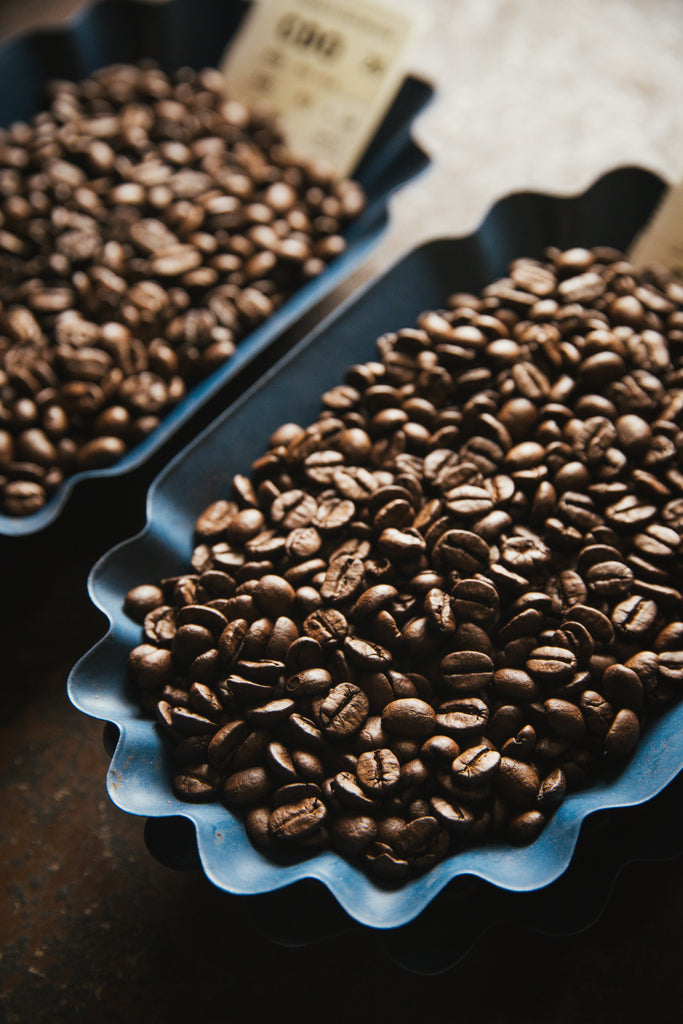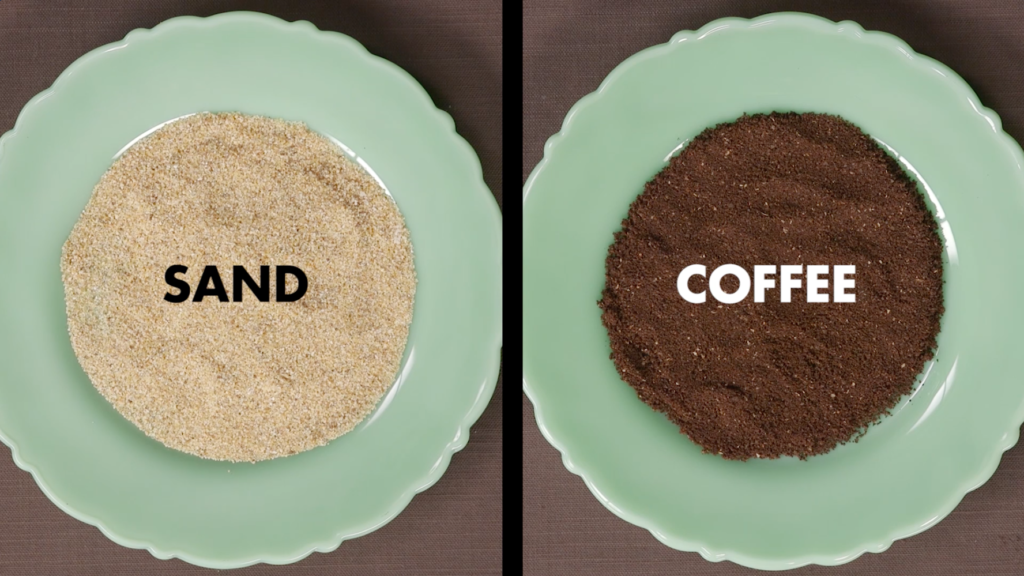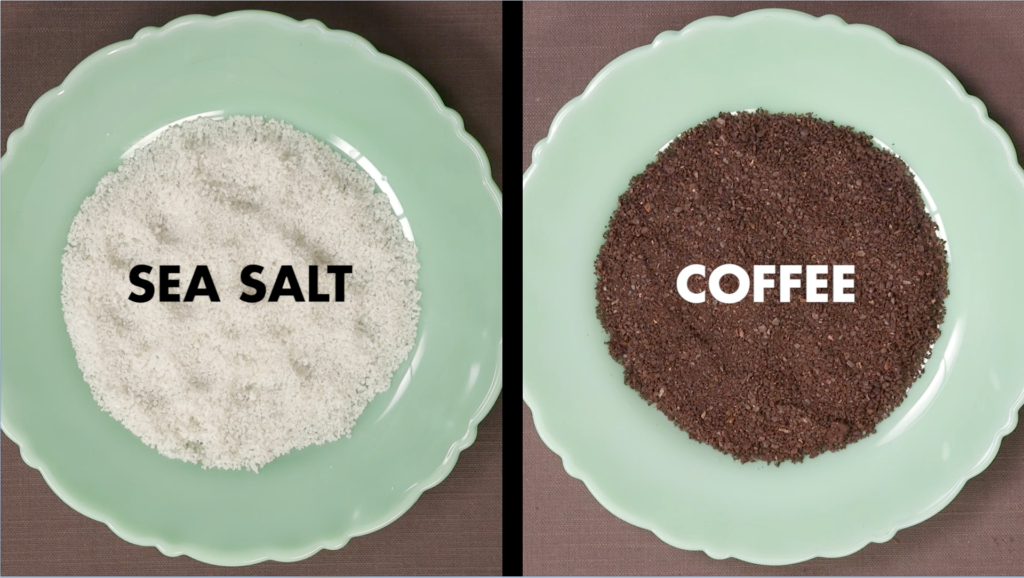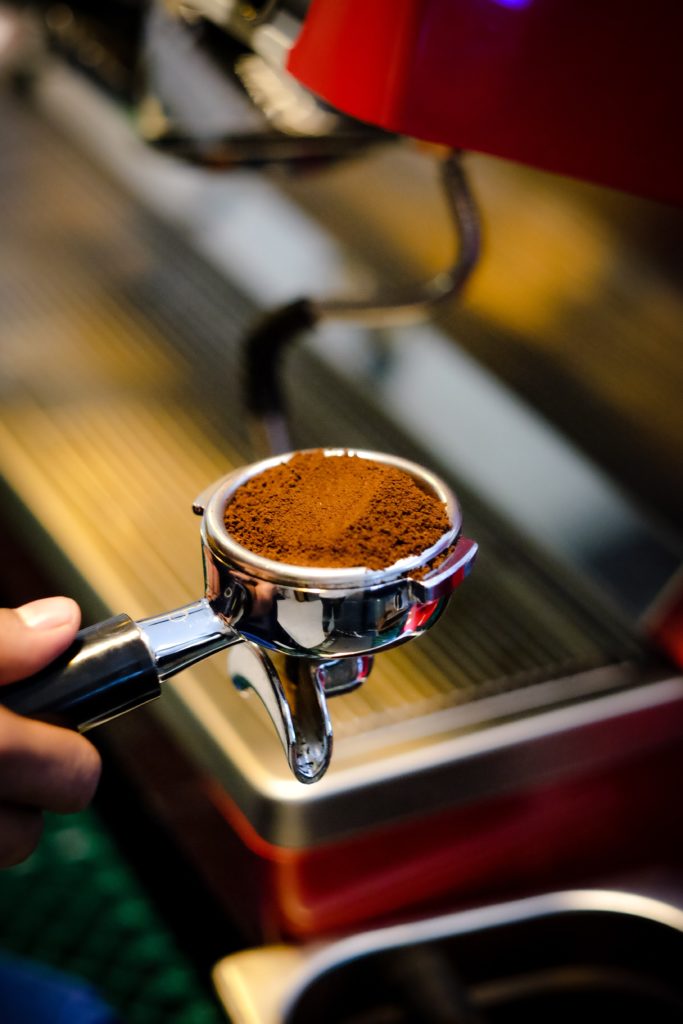
Down to the Grind: How to Make the Perfect Cup of Coffee
We know that 80% of you Peetniks grind your whole beans at home—which already makes you coffee experts. But here’s some food for thought on how dialing in the perfect grind can help you enjoy your favorite beans even more.
What Makes The Perfect Cup of Coffee?
While some might say that there are rules to making the perfect cup of coffee, we prefer to think of it as a combination of factors that can guide you in how to achieve your perfect cup. Everyone will want to start by bringing fresh, filtered water to a temperature between 195°F and 205°F. The roast level of the beans is where we get into what makes the perfect cup for you: some like light roast, some like medium roast, and some like dark. Play around and do some taste tests to dial in your preferred roast level (or keep some variety in your life!). Roast levels perform differently depending on how they’re brewed and how your beans are ground—French press grind size is very different than espresso grind size, and pour over grind size is different from cold brew grind size (and even drip grind size). And here’s where we get down to the grind: choosing the right grind size for your brew method will go a long way to making a perfect cup of coffee.
The Basics of Coffee Grind Types
This is a pretty simple concept but remembering it will help you get the right grind for your preferred coffee taste.
The idea is this: the more physical contact the coffee matter has with water, the quicker the coffee will extract. Add hot water to a whole, roasted bean, for example, and it would take forever to brew a cup of coffee, leaving a seed floating in liquid instead of a tasty cup of Peet’s. So, we grind beans into different sizes—from coarse to fine—to increase the surface area of coffee matter that is exposed to water, with the ultimate goal of extracting everything that’s yummy and sweet from the coffee beans into your drink.
The visual explanation often used is a glass full of sand versus a glass full of pebbles. Run a cup of water through each and the first will block the flow, while the second won’t hold it.
For instance, if you grind your coffee beans too fine, you could block your extraction. Too coarse, on the other hand, and the water will gush through your ground coffee, not getting anything out and resulting in a weak, watery cup.
All of which means that no matter what your favorite brewing method and equipment is, grind size matters. A lot. At the end of the day, it’s all about how it tastes to you, so play with different levels, note the one you find delicious, and stick to that.
Here are some ballpark guidelines to get you started:

French Press Grind Size (Immersion Brewing)
The preferred brew method of our coffee experts since as far back as Mr. Peet’s time, we brew the French Press (also known as the press pot or cafetière) for 4 minutes. That’s a long time for coffee to be in contact with water, so we recommend a medium-coarse grind: think raw sugar granules or coarse sea salt.
The beauty of the press pot method is its unadulterated coffee flavor: no filter papers to trap the heavy oils and, next to the cupping method used to evaluate coffee for purchase, it’s the purest form of tasting coffee. Be warned though, not only do the oils escape filtering, but also any fine grounds, leaving a residue at the bottom of your cup that you might love (or hate). Our Director of Roasting John Nicolini famously loves double dosed French Roast in the press. If the coffee was ground too fine, the smoky, bittersweet flavor of French would be dissolved in an over-extracted sludge. A coarse grind allows for long extraction and lets all the coffee-forward notes shine.

Drip Coffee Grind Size (Electric Maker)
If you drink drip or filter coffee, then you’re in the medium grind zone. As water flow is controlled by the electric coffee maker and not your hand, your only variable is going to be grind. What does ‘medium’ mean in this case? Think table salt.
We’re big fans of the aromatic, smooth, dark berry juiciness of Organic Alameda Morning Blend for a drip coffee that helps you rise and shine. Not only does this lively world blend start a day with distinctive taste, but the knowledge that it’s helping smallholder farmers improve their yields and quality adds even more satisfaction to the cup.
Pour Over Grind Size (Manual Brewing)
If you’re a pour over coffee person (think a Peet’s classic like the Chemex, or newer devices like the Kalita Wave and Hario V60), there’s more play in the grind size—from medium coarse to medium fine. Think boxed, kosher salt to fine granulated white sugar.
Generally speaking, these methods are 3 to 4-minute extractions, so use your grind size to regulate the flow time. Coarser grind means faster flow; finer grind means slower flow. Find the extraction that tastes good to you, keeping all the aromatic notes and yielding a satisfying body. Then note the grind size it took to get you there. Somewhere in the spectrum of medium is your ideal Peet’s pour over cup.
Many pour over coffee fans favor the bright notes of light and medium roast coffees, so why not try Costa Rica Aurora? You might find that when the clean citric zing of the Costa Rican beans in this blend meets the darker berry notes of the Kenyan ones, they express all their harmonic complexity perfectly in a pour over brew.
Espresso Grind Size (Pressure Extraction)
A classic espresso machine applies around 9 bars of pressure to extract all the goodness out of beans in a really short, 25-second timeframe. This means we have to grind finer for water to reach all the ground particles and pull the deliciousness out of them. If we use a coarser, sea-salt consistency, the water will gush through the grounds and not bring much taste with it.
Let’s take Espresso Forte, the blend we created for lovers of this European-style short cup (25-40 mls). If we ground too coarse, we’d lose the bright lively spiciness of the Americas to a too-quick extraction. At 25 ml’s, the water wouldn’t even hit the sides before racing into the cup. If we ground too fine, our cup could become overbearing, cloying. Getting the best out of each cup makes grind size so important.

Cold Brew Grind Size (No Heat Brewing)
Last up for consideration, the Cold Brew method. Making cold brew at home doesn't have to be complicated, and we think our Easy Cold Brew recipe brings out the best of the coffee we created specifically for the job: Baridi Blend. Now, to make the most of the refreshing, crisp notes of this medium-roasted blend, we recommend leaving extra-coarsely ground coffee (even coarser than for the press pot, think roughly crushed peppercorns) in contact with water for 12 hours. Thinking back to the basics: that’s a lot of contact time for this high coffee-to-water ratio brew method so we want to avoid ending up with a muddy sludge (the result of a too-fine grind) and bring out the best in our inherently sweet and aromatic Baridi Blend with its clean finish.

Burr Versus Blade: How Do You Get the Perfect Grind?
In the home model market, you’ve basically got two types of machines.
First the blade grinder: inexpensive and easily accessible. You know, it’s the whizzy single rotating blade that turns some of your beans to fine powder, leaving others the size of crumbs. With variable grind particle sizes, you have less control over your coffee’s extraction.
Which is why we love the second type, the burr grinder. While any grinder will break beans up, a burr grinder—which has two surfaces between which beans are pulverized—is going to grind more consistently than a blade. Yes, there may still be some more finely ground coffee, but overall, it will be far more consistent than what a blade grinder does.
Not all beans are created equal, so even in a single origin as perfectly modulated as Guatemala San Sebastian, there is enough variability between beans that grinding will yield a range of different-sized particles. Which, as we now know, means different rates of water flow-through, extracting at different rates. When you get to blends, like the all-time favorite Major Dickason’s Blend®, this variability is even more the case, with a number of different coffee bean types in the blend, potentially grinding—and thus extracting—differently.
Which makes your choice of grinder one of the most important coffee decisions you’ll make. Whichever model you use, congratulate yourself for taking that big quality step towards grinding your own beans freshly for each brew.
From Dark into the Light: How Roast Type Affects Grind Extraction
It’s worth knowing that Peet’s dark roast beans have had more of their cell structure broken down by the deep roasting they undergo, making them less dense and therefore more soluble than our lighter roasts. So, if you’re enjoying a dark roast like French Roast, you can grind to the coarser side and still get a tasty extraction. Grind it too fine, and you’ll be pulling out some potentially undesirable astringent notes. Lighter roasts, on the other hand, keep more of their flavor locked up inside, so you can afford to grind them a bit finer.
It’s a Wrap…or a Grind
When all is said and done, you know your tastes, and there is no right or wrong. Under-extract a light roast, like our Luminosa Breakfast Blend, or over-extract a dark Italian Roast and if you love the taste, that’s all that counts.
We encourage you to experiment. Grind your favorite roast in coarse, medium, and fine levels and brew each the exact same way.
Note the final brew time and then taste them, side by side.
Which do you prefer? And why?
Note it down, so you can consistently repeat the brew as you most enjoy it.
Then, let your taste preference be the final judge.


